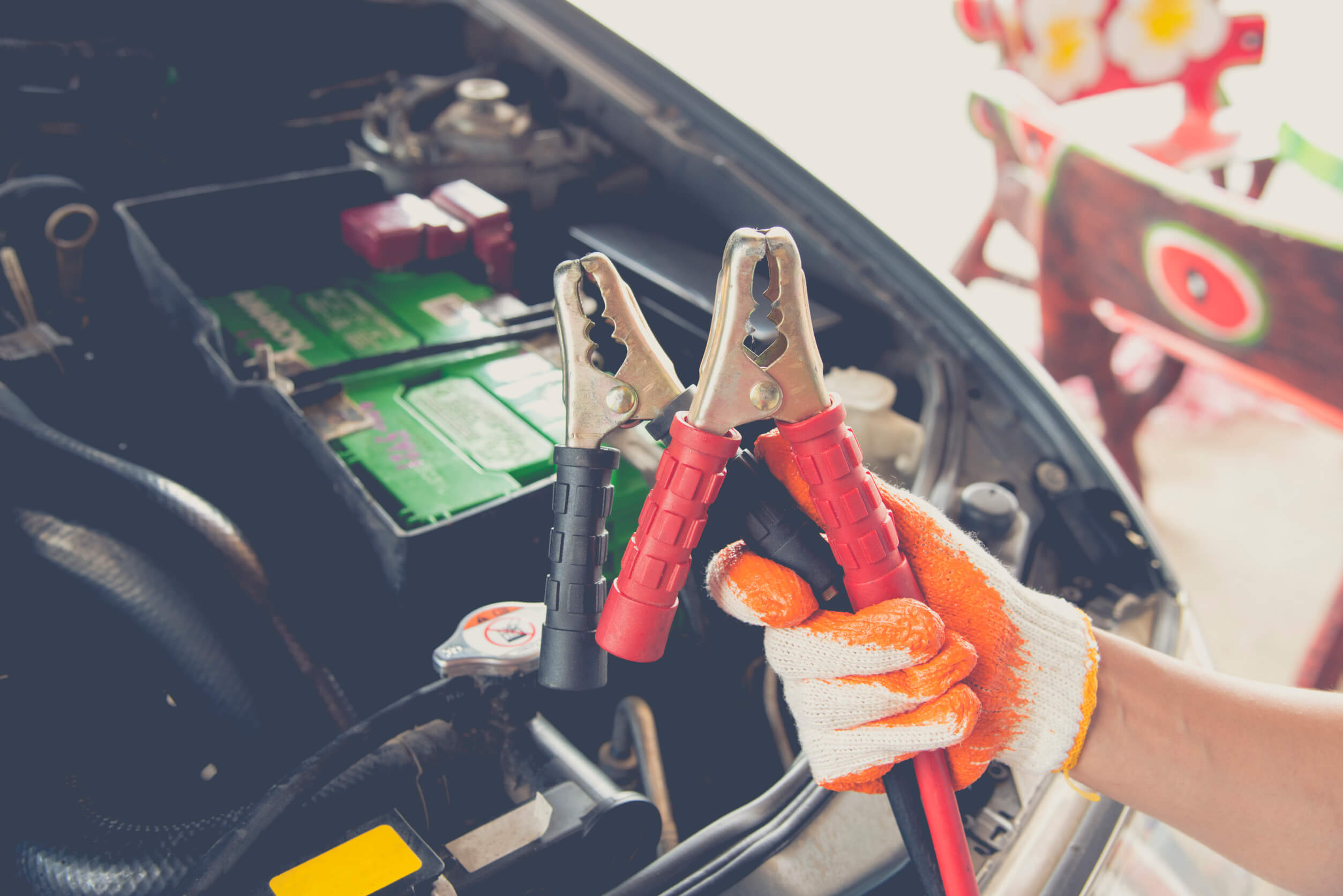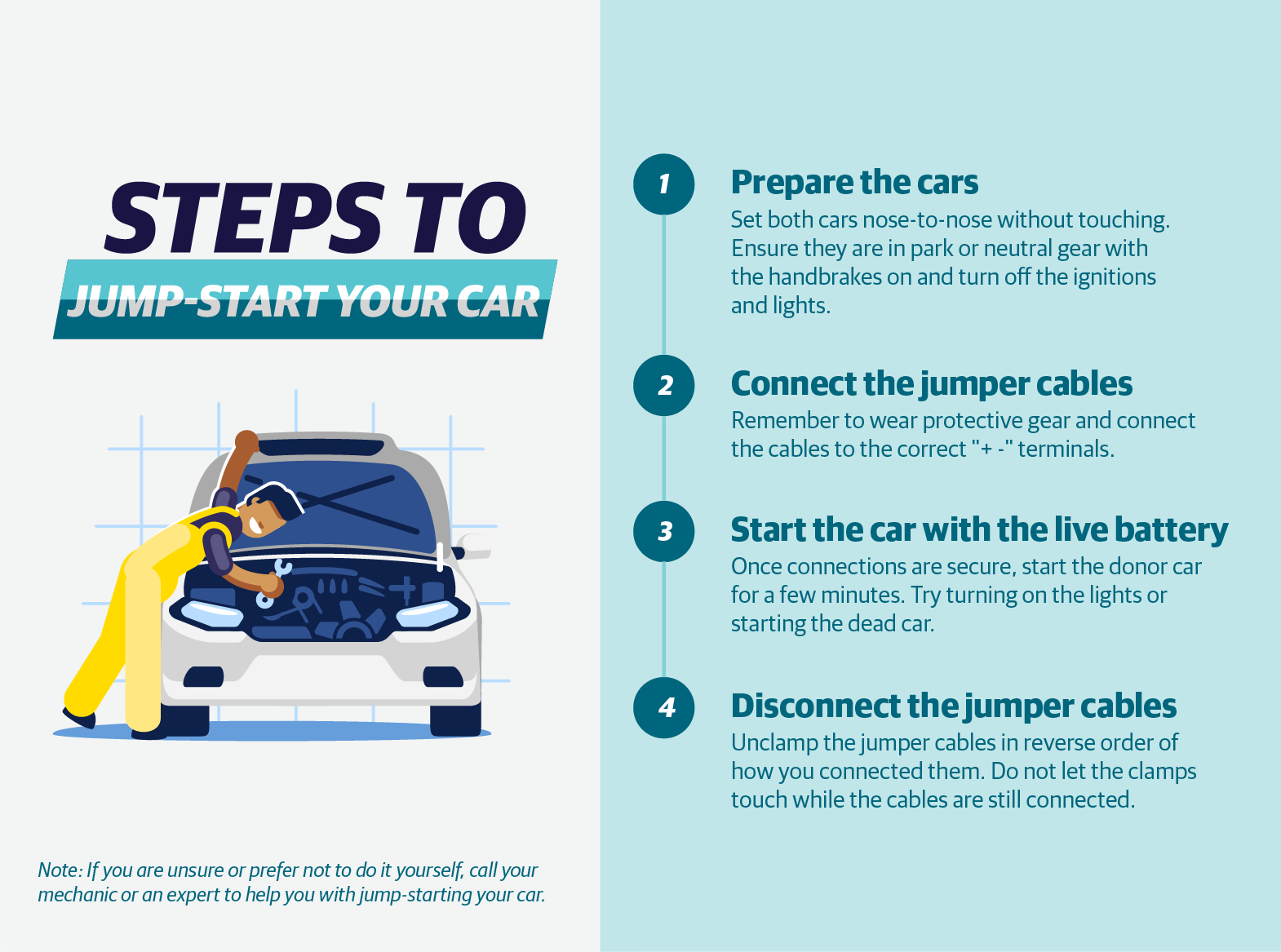Car Won't Start? Here's How to Jump-Start Your Conventional Car Safely

For a fuel-powered vehicle, the car’s battery is one of the most important components of the vehicle, providing essential power so you can start the engine.
If you've tried starting your car but only hear clicks or sputters, your car's battery is likely dead, and you won’t be able to drive your car. There can be many reasons that cause your car’s battery to go flat. For example, you may have accidentally left a light on for too long or your car’s battery is already very old and cannot hold a charge anymore.
Regardless, it’s a good idea to try and jump-start your car’s engine. If the jump-start works, at least you won’t be stranded by the roadside and can drive to your mechanic so they can fix the problem for you.
Jump-starting a car is pretty simple; all you need are a few simple tools that you can keep on hand. Read our convenient guide below to learn how to jump-start your conventional car safely.
Tools to jump-start your vehicle
As mentioned above, you’ll need a few tools before you attempt to jump-start your car.
1. Jumper cables
These are usually long, insulated cables with clamps at the ends and they usually come in red and black. Generally, the red cable indicates positive polarity, and the black cable is negative.
2. Another power source
You can get either a portable jump-starter (it’s very similar to a power bank) or get another fuel-powered vehicle to provide the power.
Note: Avoid using hybrid or electric cars to jump-start your battery. If you have a hybrid or electric vehicle, the steps to jump-start your vehicle can vary and doing it wrong can damage the vehicle. It is recommended to call your car dealer for assistance to jump-start your hybrid, plug-in electric vehicle or electric vehicle.
3. Gloves
It’s recommended to use heavy-duty or mechanic gloves to protect your hands when preparing to jump-start your car. If not, disposable gloves can also offer some measure of protection.
4. Torchlight
This is not only useful for checking the battery’s condition but also convenient to keep in your boot in case any other issues occur with your vehicle.
Safety Notes
Before you get started, make sure you follow all the safety precautions below so that you won’t get injured or damage your car during your jump-start attempt.
Read the car manual to see whether there are any warnings or instructions from the manufacturer about jump-starting your car. Check the car’s battery is not dry, leaking or cracked as these can be signs that the battery is compromised and can affect your car’s performance or cause safety hazards.
Once you have ensured your car’s battery is fine, do a quick check to remove flammable items around the battery.
Although uncommon, sparks may fly when jump-starting a car and you don’t want to risk starting a fire. Therefore, you should remove all metal objects, such as watches, rings, and necklaces and do not let them come into contact with the car battery.
Steps to jump-start your car

1. Prepare the cars
Ensure that the battery providing the jump has sufficient voltage and a matching voltage system with your car. Park both cars nose-to-nose so that the jumper cables can reach each battery but make sure that the cars are not actually touching each other as this could cause a short.
Set both cars in park or neutral gear with the handbrakes on and turn off the ignitions and lights.
2. Connect the jumper cables
Remember to wear protective gear before popping the bonnets of the cars where the batteries are located to identify the positive and negative terminals.
You can find these by looking at the "+ -" markings on top. If not, then usually the red terminal is positive while the negative is black unless otherwise indicated.
Take out the jumper cables and ensure that you connect them to the correct terminals in the following order:
i. Connect one side of the red cable to the positive terminal of the dead car and make sure that it is firmly attached.
ii. Fix the other side of the red cable to the positive terminal of the working car battery.
iii. Connect the black cable’s clamp to the negative terminal of the working battery.
iv. Attach the other end of the black cable to an unpainted metal part of the dead car, such as a metal nut or bolt, farther away from the battery. This helps to ground the battery. Never attach this black clamp to the other negative terminal on the dead battery.
3. Start the car with the live battery
Make sure your connections are all secure and in order. Then, start the donor car and let it run for a few minutes so it can charge the dead battery.
Once it has charged for several minutes, try testing the dead car’s battery by turning on the lights to see whether the battery is being charged. If this works, try starting the dead car’s battery. It should start as expected.
If not, wait for a few minutes before trying to start the dead car again or step on the donor car’s accelerator a few times to speed up the charging process. If this does not work, you may need to contact a professional since your battery may be beyond saving.
Your car insurance will usually come with roadside assistance with a number for you to call. For Kurnia comprehensive motor policyholders, you can call 1 800 88 3833 or use the One Touch app to get 24-hour complimentary roadside assistance for dead batteries and more.
4. Disconnect the jumper cables
Whether your car can be jump-started or not, you’ll need to remove the jumper cables and this must be done in the right order as well. The cables should be unclamped in reverse order of how you connected them:
i. Remove the first black clamp from the unpainted metal
ii. Disconnect the other black cable from the negative terminal of the working battery.
iii. Take out the red clamp from the donor car’s battery.
iv. Disconnect the other red clamp from your car’s positive terminal.
Remember not to let the clamps touch each other while any part of the cables is still attached to a car.
If you are unsure or prefer not to do it yourself, call your mechanic or an expert to help you with jump-starting your car.
What should you do after a jump-start?
If your car’s engine can be started, then let the engine run for a few minutes and take it for a 30-minute drive so the battery can continue charging. Otherwise, it may die again once you switch it off and you may need another jump-start.
Once your car is running, it’s recommended to drive to a mechanic so they can determine whether your car’s battery needs to be replaced or if there are any other issues.
When do you need to change your car’s battery?
On average, car batteries can last between five to seven years, depending on your usage and vehicle model.
However, if your car’s battery does not show signs of deterioration, then you do not need to change it yet. But if it has been more than five years and you’re struggling to start your car, it may be time to get it checked out before you get stranded by the roadside.
What should you do if you are unable to jump-start your car?
If all else fails, reach out to your insurer to request roadside assistance services or call for tow truck services.
For Kurnia comprehensive motor policyholders who encounter a breakdown or other road emergencies, you can rest assured that we will take care of you. We offer complimentary 24/7 nationwide roadside assistance, depending on your policy which includes services such as towing, fuel delivery, jump-start and more. Just contact us when you need it and help will be on the way.
Disclaimer: This blog post is strictly for informational purposes, and should not be taken as advice of any kind. Kurnia disclaims all responsibility for any losses resulting from reliance on the information contained in this article.
Liberty General Insurance Berhad is a member of Perbadanan Insurans Deposit Malaysia (PIDM). PIDM protects the benefit(s) payable under the eligible policy up to protection limits. Please refer to PIDM's TIPS Brochure or PIDM's Website, or contact our customer service.